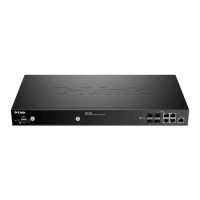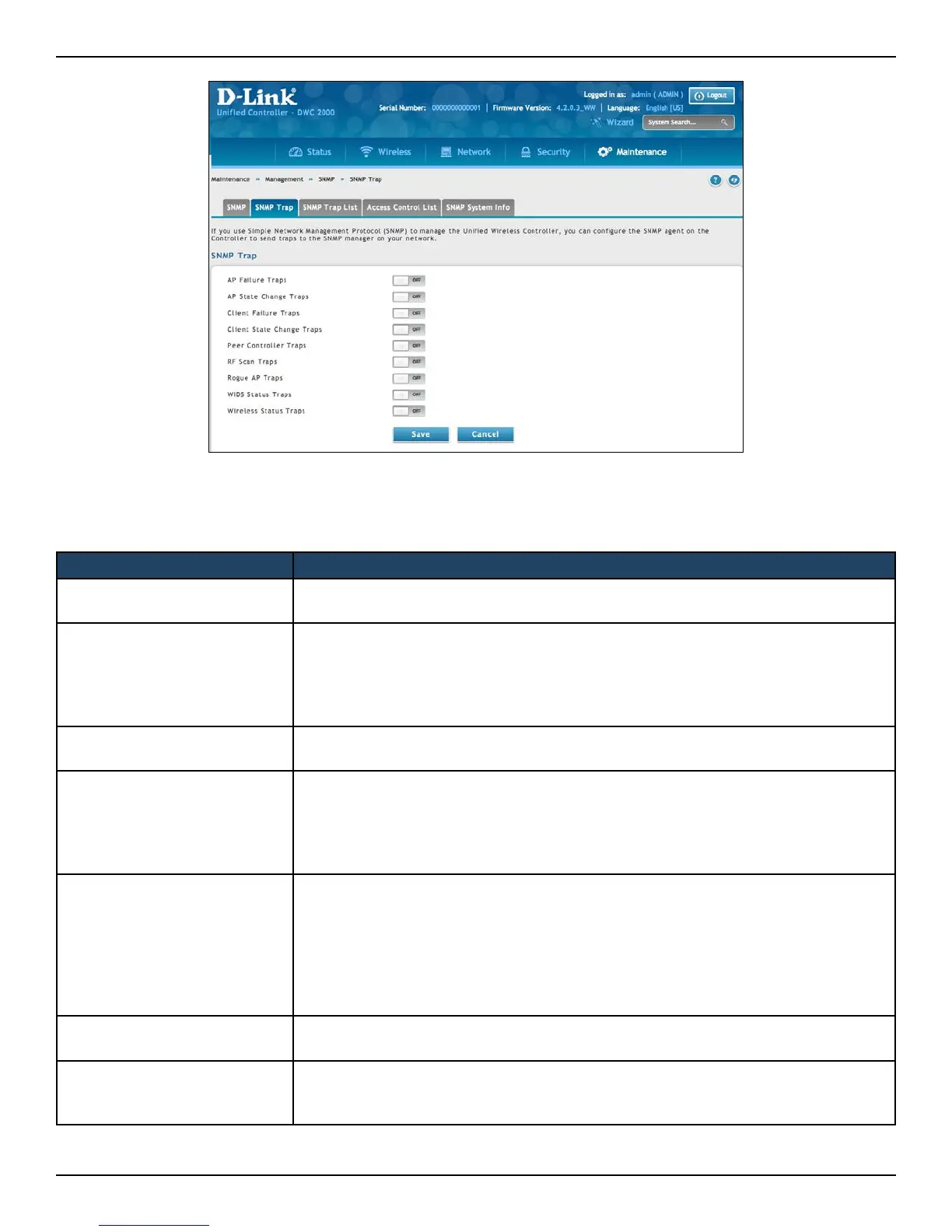D-Link DWC-2000 User Manual 247
Section 8 - Maintenance
2. Enable the trap as desired (refer to the table below).
3. Click Save.
Field Description
AP Failure Traps
If you enable this eld, the SNMP agent sends a trap if an AP fails to associate or
authenticate with the controller
AP State Change Traps
If you enable this eld, the SNMP agent sends a trap for one of the following reasons:
• Managed AP Discovered
• Managed AP Failed
• Managed AP Unknown Protocol Discovered
• Managed AP Load Balancing Utilization Exceeded
Client Failure Traps
If you enable this eld, the SNMP agent sends a trap if a wireless client fails to associate
or authenticate with an AP that is managed by the controller.
Client State Change Traps
If you enable this eld, the SNMP agent sends a trap for one of the following reasons
associated with the wireless client:
• Client Association Detected
• Client Disassociation Detected
• Client Roam Detected
Peer Controller Traps
If you enable this eld, the SNMP agent sends a trap for one of the following reasons
associated with a peer controller
• Peer Controller Discovered
• Peer Controller Failed
• Peer Controller Unknown Protocol Discovered
• Conguration command received from peer controller. (The controller does not
need to be Cluster Controller for generating this trap.)
RF Scan Traps
If you enable this eld, the SNMP agent sends a trap when the RF scan detects a new
AP, wireless client, or ad‐hoc client.
Rogue AP Traps
If you enable this eld, the SNMP agent sends a trap when the controller discovers a
rogue AP. The agent also sends a trap every Rogue Detected Trap Interval seconds if
any rogue AP continues to be present in the network.

